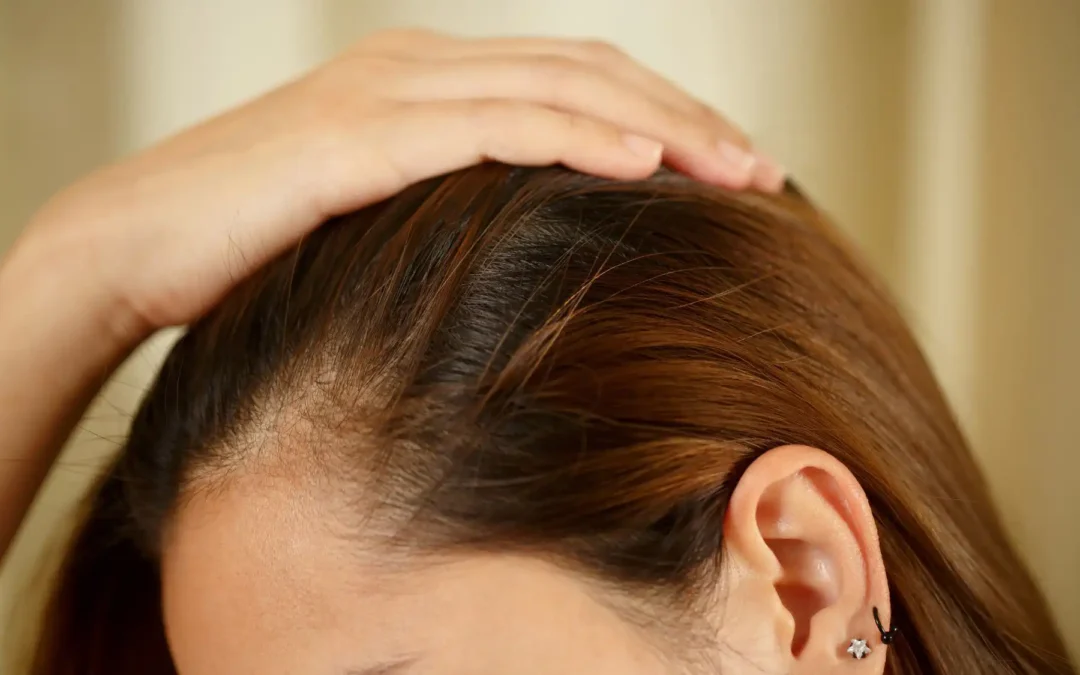If you’ve ever spent a sunny day outdoors without a hat, you’ll know the uncomfortable sting that comes with sunburn on the scalp. Whether you have thinning hair, a parting in your hairstyle, or just didn’t think about protecting the skin under your hair, the result can be redness, tenderness, itching, and in some cases, flaky scalp sunburn or even peeling scalp sunburn.
This guide will walk you through how to treat sunburn on the head so it heals quickly, ways to relieve discomfort, and how to prevent it happening again.
Recognising Sunburn on Scalp
Sunburn on the scalp often looks and feels different from sunburn elsewhere. Symptoms can include:
- Redness or pink patches along the parting, crown, or hairline
- Sensitivity to touch, especially when brushing your hair
- Itchiness or tingling
- Flaky scalp sunburn as it begins to heal
- Peeling scalp sunburn if the burn is more severe
It’s worth noting that sunburn on the head can be easily overlooked because the hair disguises the damage at first. However, the scalp’s skin is delicate and can burn just as easily—if not more—than other parts of your body.
First Steps to Soothe the Burn
The first 24–48 hours after getting sunburn on the scalp are the most important for minimising discomfort and speeding up recovery.
- Get out of the sun immediately to prevent further damage.
- Cool the area with a cold compress or rinse under cool (not cold) water in the shower.
- Use a gentle, fragrance-free conditioner to soothe irritation while washing your hair—avoid harsh shampoos or strong exfoliating scrubs.
- Pat hair and scalp dry rather than rubbing, as the skin is already sensitive.
If you’re dealing with sunburn elsewhere on your body, click here to read our guide Treatments for Sunburn: How to Heal & Protect Skin, which covers soothing methods for all skin types.
Relieving Pain and Discomfort
Sunburn on the head can feel especially sore due to the tension from hair follicles and daily movement. These tips can help:
- Over-the-counter pain relief such as ibuprofen or paracetamol can ease inflammation and discomfort.
- Aloe vera gel or an after-sun lotion applied gently to the scalp can cool the skin and speed up recovery. Look for formulas free from alcohol, which can dry out the skin.
- Avoid tight hairstyles like ponytails or buns, which can pull on tender skin.
- Sleep with your head elevated on an extra pillow to help reduce swelling.
Helping the Healing Process
To ensure your sunburn on scalp heals properly without prolonging irritation:
- Hydrate inside and out—drink plenty of water and use a light, non-greasy moisturiser suitable for the scalp.
- Avoid heat styling such as hairdryers, straighteners, or curling irons until the burn is fully healed.
- Stay out of direct sunlight or wear protective headwear until your skin recovers.
If you notice blistering, severe pain, or signs of infection (such as pus or swelling), seek medical advice promptly.
Dealing with Flaky or Peeling Scalp Sunburn
As the burn heals, you might notice flaky scalp sunburn or peeling scalp sunburn. This is a natural part of recovery, but it can be frustrating.
- Do not pick or scratch—it can delay healing and increase infection risk.
- Use a gentle moisturising conditioner to soften peeling skin.
- A mild scalp oil, such as coconut or jojoba, can help restore lost moisture and soothe irritation.
- Brush lightly with a soft-bristle brush to lift loose flakes without causing more trauma to the skin.
Protecting Your Scalp from Future Sunburn
Prevention is key when it comes to avoiding another painful case of sunburn on the head.
- Wear a wide-brimmed hat when outdoors for extended periods.
- Apply SPF directly to your scalp, especially along partings and thinning areas. Look for non-greasy, spray or powder formulas made for hair and scalp.
- Style strategically—switch up your parting to prevent repeated exposure in the same area.
- Keep in mind that UV damage can still occur on cloudy days, so make protection part of your routine year-round.
Your lips are also highly susceptible to sun damage. If you’ve ever experienced sore, peeling lips after sun exposure, click here to see our Treatment for Sunburned Lips: Soothe and Prevent guide for full advice on healing and protection.
When to See a Dermatologist
Most cases of sunburn on scalp heal with at-home care, but you should seek medical attention if:
- You develop severe blistering or swelling
- The pain is intense and not improving
- There are signs of infection such as pus or fever
- You get frequent sunburns in the same area, which can increase your risk of skin cancer
A dermatologist can assess your skin and recommend professional treatments, as well as advise on prevention tailored to your lifestyle.
Final Thoughts
Sunburn on the scalp is more common than many realise, but it’s also highly preventable. By taking quick action to soothe the burn, relieving discomfort, and committing to consistent protection, you can avoid the discomfort of flaky scalp sunburn and peeling scalp sunburn in the future.
When in doubt, prioritise sun safety—and remember, your scalp deserves the same care and protection as the rest of your skin.


